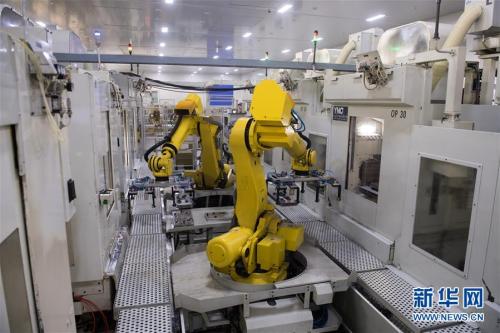


(Photo/Xinhua)
The National Bureau of Statistics (NBS) recently released data which indicated China's achievements in scientific and technological innovations over the past seven decades.
According to NBS, China's research and development (R&D) spending hit 1.97 trillion yuan in 2018 ($286 billion), 138 times the 1991 figure, and the number of patent applications saw substantial growth.
Experts noted that enterprises were the primary driver for China's fast-growing innovations. In 2017, Chinese enterprises spent 1.35 trillion yuan on R&D, accounting for 76.5 percent of the national total.
More companies today value scientific and technological innovations and regard innovation as the lifeblood of development, according to Zhao Zhiyun from the Institute of Scientific and Technical Information of China.
In 2017, China's high-tech manufacturing industry created 15.9 trillion yuan in main business income, up 55.8 percent compared with 2012. R&D expenditure used for high-tech manufacturing increased by 83.6 percent, with an annual growth of 12.9 percent on average.
High-tech manufacturing, as a part of the real economy, plays a supporting role in the process of building a modern economy, said Sun Fuquan, vice president of the Chinese Academy of Science and Technology for Development.
Sun believed that high-tech manufacturing has yielded remarkable results, as the country now implements innovation-driven development. This stimulates the upgrading of conventional industries while catalyzing new industrial forms toward high-end production.
High-tech products, including high-speed trains, nuclear power stations, and communication devices have become China's overseas business cards, said Zhao.
Meanwhile, steel, cement, and other conventional industries are increasing their added value of products through innovation and contributing more to economic development, Zhao added.
Against China's backdrop of profound changes and the upgraded structure of domestic demand and consumption, experts agreed that technological innovation can be a decisive force for social reform as it provides high-quality factors of production and life.
They suggested emphasizing systematic innovation to unleash its power in driving economic development.
 Fire brigade in Shanghai holds group wedding
Fire brigade in Shanghai holds group wedding Tourists enjoy ice sculptures in Datan Town, north China
Tourists enjoy ice sculptures in Datan Town, north China Sunset scenery of Dayan Pagoda in Xi'an
Sunset scenery of Dayan Pagoda in Xi'an Tourists have fun at scenic spot in Nanlong Town, NW China
Tourists have fun at scenic spot in Nanlong Town, NW China Harbin attracts tourists by making best use of ice in winter
Harbin attracts tourists by making best use of ice in winter In pics: FIS Alpine Ski Women's World Cup Slalom
In pics: FIS Alpine Ski Women's World Cup Slalom Black-necked cranes rest at reservoir in Lhunzhub County, Lhasa
Black-necked cranes rest at reservoir in Lhunzhub County, Lhasa China's FAST telescope will be available to foreign scientists in April
China's FAST telescope will be available to foreign scientists in April "She power" plays indispensable role in poverty alleviation
"She power" plays indispensable role in poverty alleviation Top 10 world news events of People's Daily in 2020
Top 10 world news events of People's Daily in 2020 Top 10 China news events of People's Daily in 2020
Top 10 China news events of People's Daily in 2020 Top 10 media buzzwords of 2020
Top 10 media buzzwords of 2020 Year-ender:10 major tourism stories of 2020
Year-ender:10 major tourism stories of 2020 No interference in Venezuelan issues
No interference in Venezuelan issues
 Biz prepares for trade spat
Biz prepares for trade spat
 Broadcasting Continent
Broadcasting Continent Australia wins Chinese CEOs as US loses
Australia wins Chinese CEOs as US loses